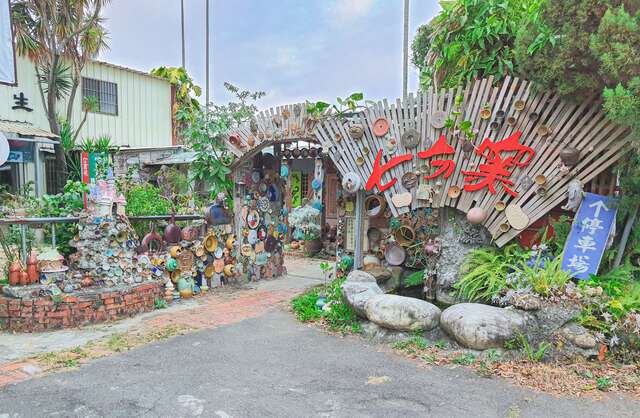Qifeng Kiln Introduction
Qifen Kiln is located on a small hill in Xinshe and was established in 1993, undoubtedly one of the well-known attractions in Xinshe. Qifen Kiln is a large kiln factory that engages in activities such as clay body production, glaze, firing, and educational programs, with pottery carving being its main creative focus. Zhang Lifu founded the Taiwan Ceramic Carving Society in 1995 and served as its first chairman, establishing the society's headquarters here, collaborating with many artists to promote art and nurture a new generation of artistic creators, thus integrating art into daily life. Numerous cultural activities have been held in central Taiwan, and exhibitions are regularly held at the cultural center. Many wonder about the origin of the name Qifen Kiln. The name comes from the idea that pursuing seven parts joy and three parts intoxication is a metaphor for our attitude towards life, “Why not be three parts intoxicated in life? Understand the world and feel three parts intoxicated.” Zhang Lifu’s inscription "Drunken Immortal" has resonated with many people, and we manage the kiln with the mindset of pursuing seven parts and serving eight parts. Zhang Lifu and his wife, Li Chunmei, are passionate about ceramic art and have also explored various art fields, including oil painting, traditional Chinese painting, calligraphy, and mural painting. Teaching and promoting art are central to their lives. At Qifen Kiln, you can admire pottery as well as participate in pottery-making. The space includes over 200 ping of exhibition area for ceramic creations, over 400 ping of pottery-making classroom activity area, and over a thousand ping of recreational activity area, allowing visitors to escape from troubles and feel at ease. The Zhang Lifu Art Museum regularly exhibits works by local calligraphers and painters. After experiencing the reconstruction process following the 921 earthquake, the couple, with steadfast faith, took a year and a half to rebuild and develop a more distinctive location. In addition to the original facilities, a herb garden and a botanical teaching area have also been established. The combination of ceramic art and calligraphy with the thoughtfully planned landscape of the park is made even more touching by the couple's dedication and sincerity.



























